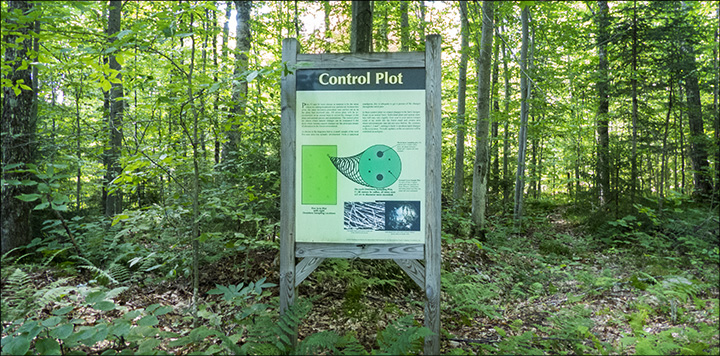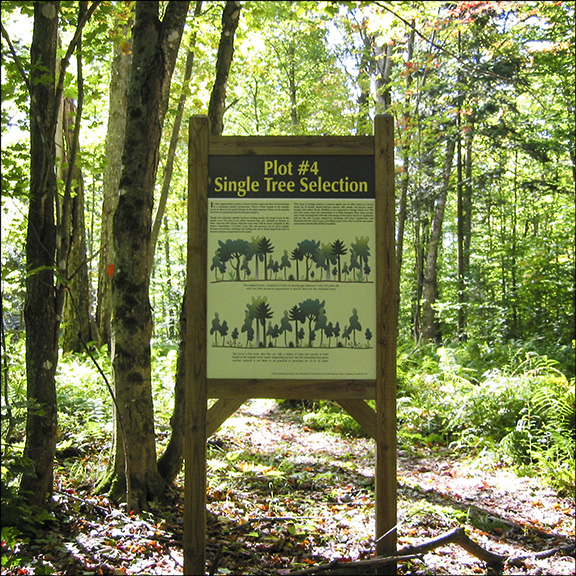An Introduction to Forest Harvesting and Regeneration Methods
Friday, 29 April 2016
10:00 AM
 Forest Ecosystem Research and Demonstration Area
interpretive sign on the Jenkins Mountain Road (12 August 2013)
Forest Ecosystem Research and Demonstration Area
interpretive sign on the Jenkins Mountain Road (12 August 2013)
If you would like to learn about forest regeneration and harvesting practices and long-range conservation planning, Cornell Cooperative Extension and the Paul Smiths College Visitors Interpretive Center (VIC) would like to invite you to attend a free class – An Introduction to Forest Harvesting and Regeneration Methods. The program gets underway at 10:00 am on Friday, 26 April 2016, in the Interpretive Building at the VIC. Woodland owners and those looking to purchase forest land are encouraged to attend.
Just as there are many reasons for harvesting trees, there are many different harvesting methods. Each method has its benefits, drawbacks, and conditions under which it is the most suitable way to harvest trees. No one harvesting method is ideal for all situations.
In 1998, the USDA Forest Service, Paul Smith’s College, and the VIC (then run by New York State) established the VIC’s Forest Ecosystem Research and Demonstration Area (FERDA). The area demonstrates five different harvesting methods on five different five-acre plots, which were recently tended again, according to management plans. Subsequent tending is used to restrict forest composition to the best-formed, fastest growing and most valuable species of trees. Two other plots serve as control plots.

(20 September 2004)
We will be walking to these plots to examine what each forest-harvest treatment looks like and to interpret how, after several years, each of these applied treatments has affected forest plants and wildlife. So, please come prepared to hike. Silviculture practices we will be looking at include:
1) selection cutting to produce a two-aged forest, where all of the largest and a few medium sized trees are cut, leaving a 30 to 50 year old stand and openings that promote vigorous understory growth
2) clearcutting to release the buried seeds of trees that thrive in full sun, such as black cherry, along with brambles and stump sprouts that provide an abundance of food for wildlife and insects
3) select cutting of individual trees, favoring shade tolerant species, in which most of the largest trees are removed
4) select cutting of groups of trees, favoring species that need more sun than the original forest and creating small, temporary areas abundant in wildlife food plants
5) ‘shelterwood’ or regeneration cutting, in which a large percentage of the canopy trees are removed and trees desired in the future forest are favored.
All of these are timber harvesting practices commonly used in the Northeast.
